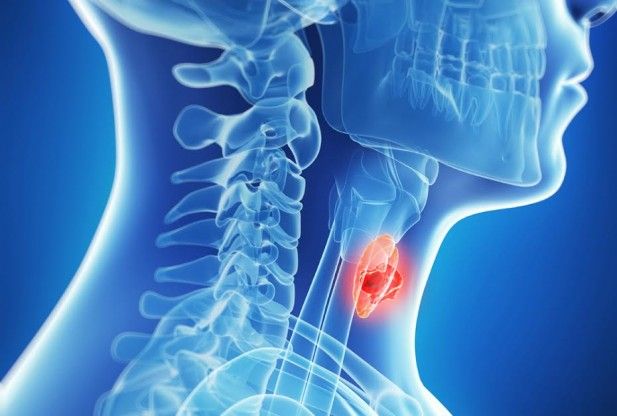Survey Reveals Wide Variation in the Treatment of Thyroid Nodules
Dr. Nicole O. Vietor presented a report assessing practice discordances related to previously published guidelines published from the American Thyroid Association and the American Association of Clinical Endocrinologists.

At the 2015 International Thyroid Conference, Nicole O. Vietor, MD of the Walter Reed National Military Medical Center, Bethesda, presented a report assessing practice discordances related to previously published guidelines published from the American Thyroid Association (ATA; 2009, 2015) and the American Association of Clinical Endocrinologists (AACE; 2010).
To perform the study, Vietor et al collected survey data from 897 respondents from the ATA, AACE, and The Endocrine Society (TES). Most of the respondents were from North America (63%) followed by Europe (12%), Asia (6.5%), the Middle East/Africa (5.6%), and Oceania (1.9%).
Vietor et al presented an index case describing a 52-year-old with no previous history of thyroid disease, smoking, or poor health. A 1.5-cm thyroid nodule was detected. Which test would respondents perform? Consistent with current guidelines 99% of respondents indicated that they would do a TSH test. However, there were big demographic differences for whether or not to do a calcitonin test for any nodule. Roughly 32% of European respondents would do the calcitonin test, while just 2.3% of respondents from North America would do a calcitonin test. Asia, Latin America, and the Middle East ranged in between these values, with 14%, 9%, and 6% respectively. Concurrent with current guidelines, a little over 50% responded that they would perform a thyroid ultrasound.
Investigators examined the methods and procedures of performing fine needle aspirations (FNAs). FNAs were performed mostly by endocrinologists (57%), but also radiologists performed FNAs frequently (32%) while pathologists (6.3%) performed the procedure in some cases. Ultrasound was used for 83% of FNAs. A 25-gauge needle was selected most commonly (44%) followed by 27 gauge (15%). Three passes was recorded as the most common (28%) number of passes performed, followed by four passes (23%). Approximately 33% of respondents did not use any pain reduction methods for the FNA procedure, while some physicians used topical gel (9%), ice pack (8%), or ethyl chloride spray (8%) to decrease pain. Interpretation of FNA results was categorically performed by cytopathologists (73%) more than any other specialist. Assessment of FNA was also frequently performed by a pathologist (18%), a commercial laboratory (8%), or in rare cases, an endocrinologist (1%).
Survey participants were asked whether or not they would perform an FNA on the following different nodules: (1) 1.5-cm hypoechoic nodule, (2) 0.7-cm hypoechoic nodule with calcifications, (3) 1.4-cm complex-cystic nodule, (4) 1.2-cm isoechoic nodule, (5) 1.8-cm spongiform nodule, or 6) a 2.5-cm purely cystic nodule. Participants responded in kind, with 94%, 67%, 55%, 42%, 37%, and 24% respectively, stating that they would perform FNA for the respective nodule criteria 1 through 6. The guidelines however, only recommend FNA for the first condition, 1.5-cm echoic nodule.
To address the geriatric factor, respondents were asked whether or not they would reconsider performing the FNA procedure on an 82-year-old person with otherwise similar criteria involving no previous history of thyroid disease, but a 1.5-cm thyroid nodule. Approximately 64% would no longer perform the FNA given the advanced age. Respondents were then asked about pregnancy issues, for example, whether or not physicians would reconsider performing FNA in a 22-year-old woman at 8 weeks gestation with a 1.5-cm nodule. Vietor said, “Results were split, with 34% stating that they would postpone the procedure and 37% stating they would perform the procedure now.”
Molecular testing is increasingly incorporated into practices. For follicular lesions of undetermined significance, the majority of respondents (38%) would use molecular analysis, followed by repeated cytology (20%) and lobectomy (20%). For a follicular neoplasm, about 47% would perform a lobectomy with 29% performing molecular analysis and 15% performing a total thyroidectomy. For a suspicious malignancy the results were “much more split,” according to Vietor, with 43% performing total thyroidectomy and another 43% performing lobectomy. Roughly 9.55% would perform molecular analysis. Examination of international molecular testing reveals that the United States performs the most molecular tests in the world (74% of respondents).This was followed by Europe, where 43% perform molecular analysis.
This was the first study documenting current management of thyroid nodules. A high level of variation in the use of diagnostic tests and treatment procedures was observed, particularly, FNA procedural application was discordant with recommended guidelines. More FNA procedures are currently being performed than are currently recommended by clinical guidelines. Wide variation in the management of pregnant females and/or FNAs on follicular lesions of undetermined significance, follicular neoplasms, or suspicious malignancies was also observed. Of potential significance, international differences in the use of calcitonin and molecular testing were discovered.
Anticipating Novel Options for the RAI-Refractory DTC Armamentarium
May 15th 2023In season 4, episode 6 of Targeted Talks, Warren Swegal, MD, takes a multidisciplinary look at the RAI-refractory differentiated thyroid cancer treatment landscape, including the research behind 2 promising systemic therapy options.
Listen